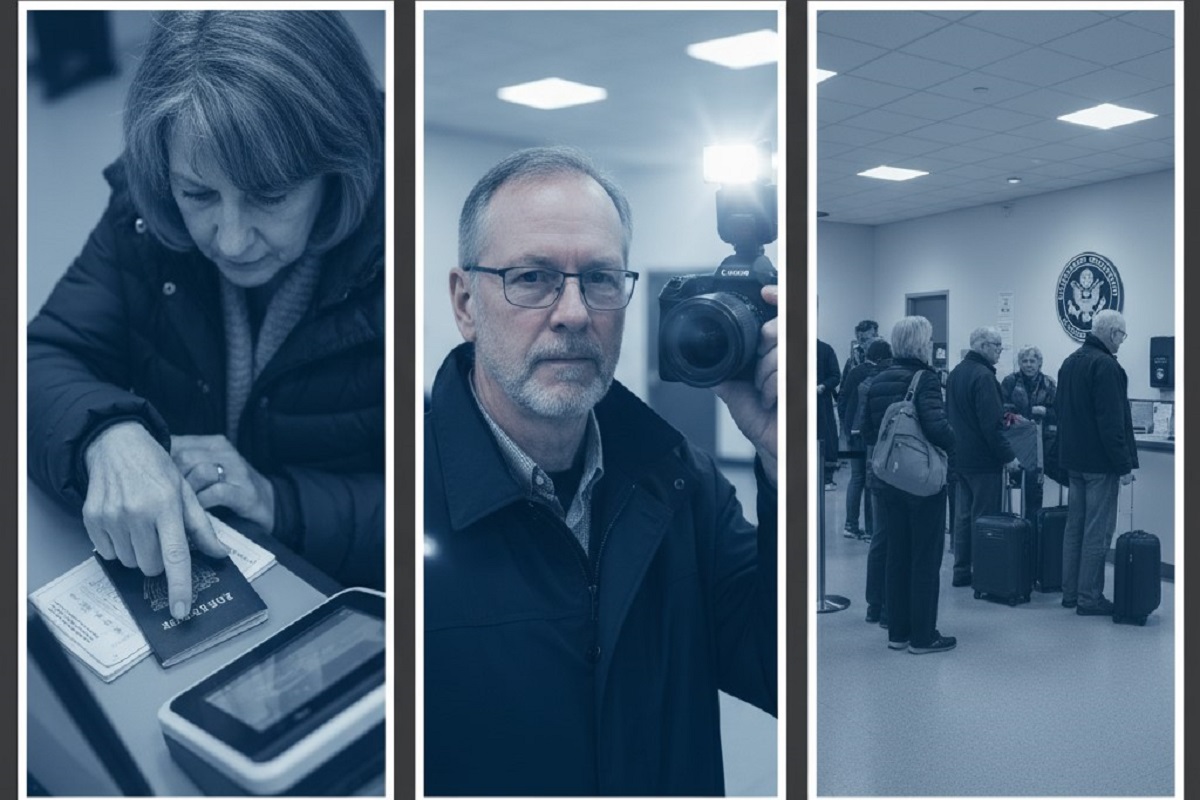Immediate changes at the border
Some Canadian seasonal travellers, often called “snowbirds,” are now being fingerprinted and photographed when entering the United States as part of newly enforced border policies. The phenomenon of Canadian Snowbirds Fingerprinted is causing consternation among travellers who winter in U.S. states like Florida and Arizona. According to a report by Canadian media outlets, several travellers crossing into New York state were subject to fingerprinting and photography during their entry process.
Canadian news network Canadian Broadcasting Corporation (CBC) documented several cases where snowbirds felt caught off guard by the new procedures.
What changed and why
The policy shift ties back to a rule announced in early 2025, when the U.S. authorities declared that all foreign nationals aged 14 or older staying in the country for more than 30 days must register with U.S. immigration authorities. While this rule had existed in law, its enforcement—and the inclusion of biometric data for Canadians—had not been consistently applied in past years.
Now, as the rule is more stringently enforced, many of the returning Canadians who spend the winter in the U.S. are encountering unexpected requirements. “We discovered we needed to have our photo taken and fingerprinted just before crossing back in,” said one Canadian snowbird at a border post near Ogdensburg, New York.
U.S. officials cite concerns over immigration compliance and national security as the reason behind the change. The requirement includes submission of information via Form I-94 or G-325R, and further biometric processing is now being reported for Canadians whose stays exceed 30 days.
Reactions and expert commentary
The mandatory biometric screening has triggered confusion and frustration among affected travellers. The Canadian Snowbird Association (CSA) has expressed concern, stating that many members were neither informed nor prepared for the new processes. “Our members expected a routine crossing—this was new and unannounced,” a spokesperson told a Canadian outlet.
Border-policy analysts note that while Canada and the U.S. have historically maintained a low-friction border, recent shifts reflect a tightening of immigration rules. “This marks a departure from the previous informal approach,” said immigration attorney Rosanna Berardi. “For snowbirds, the expectation of smooth access now includes additional biometric checks.”
Implications for travellers and communities
For Canadian snowbirds, the new policy means additional steps and potential delays when crossing the border. Some may face the need to visit designated enrolment centres or provide fingerprints after entry. The changes could influence decisions about how long to stay south of the border, where to stay, and whether processing rules might impact travel plans.
Communities in U.S. states such as Florida and Arizona are also watching the change. Canadian snowbirds contribute significantly to the winter tourism economies of these regions. With biometric requirements now in play, some travellers may reconsider their seasonal migration patterns.
For U.S. border-control operations, implementing the biometric checks adds operational complexity. Ensuring compliance across thousands of crossings without creating major queuing issues will be a challenge.
What snowbirds need to know
- Snowbirds planning U.S. stays of more than 30 days should register using Form I-94 or G-325R and be prepared for biometric screening.
- Stay current with cross-border rules; these requirements may vary by port or by mode of travel.
- Expect that additional documentation or processing might delay entry or departure, and plan accordingly.
FAQs
Not all. The new biometric requirement applies primarily to Canadian travellers who stay in the U.S. for more than 30 days and who fall under the registration rules.
The U.S. government updated its enforcement of existing immigration registration laws for foreign nationals staying longer than 30 days. The biometric checks are part of that enforcement effort.
Travellers should verify whether their planned U.S. stay exceeds 30 days, complete required registration forms (such as I-94 or G-325R), carry supporting documentation, and allow extra time for border processing if biometric screening is required.









